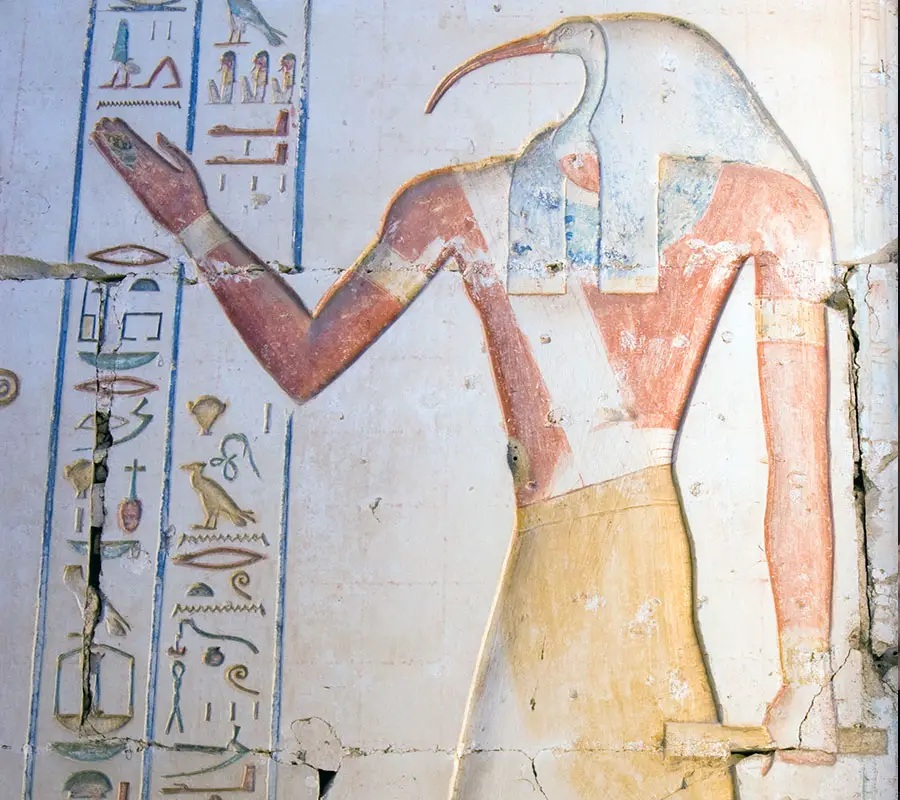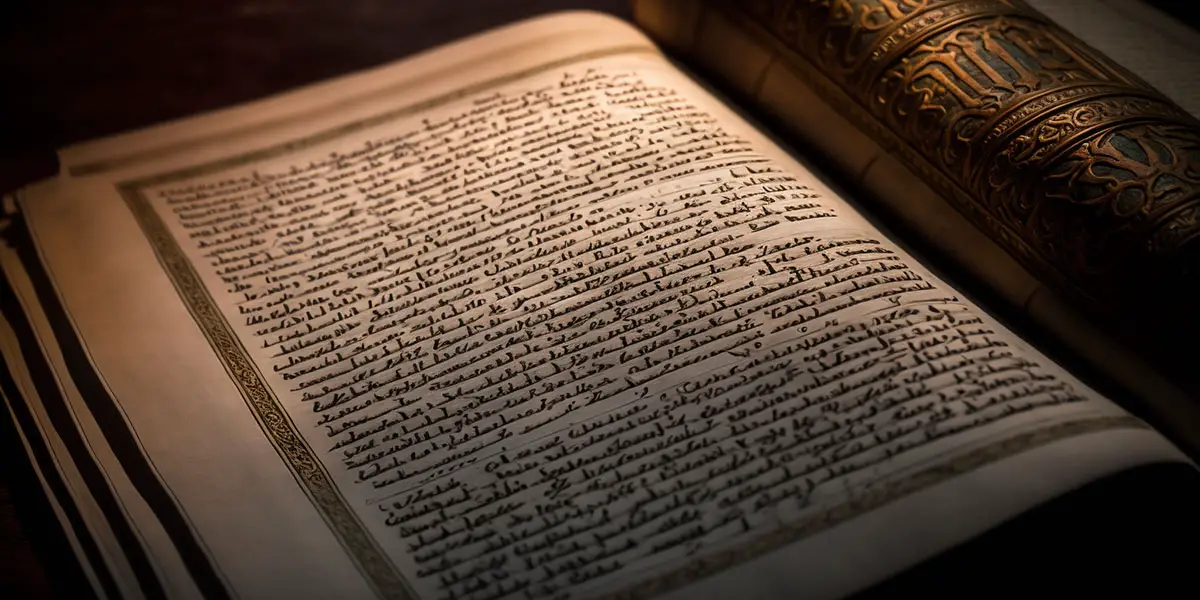Supposedly written thousands of years ago by the Egyptian god Thoth, the Book of Thoth is a mysterious book. Remains of these ancient writings remain today, as carefully preserved papyrus fragments.
The remnants of the Book of Thoth are stored in museums in Europe and the United States. There are 40 pieces of papyrus scrolls that have been preserved, with the central piece being in the Berlin Museum. The other pieces can be found in Copenhagen, Florence, New Haven, Paris, and Vienna.
Despite these fragments of scrolls being stored in museums and gaining widespread acceptance as the authentic remains, there is disagreement and uncertainty as to their importance. It is unclear wither the writings come from the actual body of work of Thoth, as well as disagreement on if a higher consciousness known as Thoth really did appear in ancient Egypt and gave the priests books of knowledge.

Disagreements over It’s Authenticity
The fragments were discovered by Egyptologists Richard Lewis Jasnow and Karl-Theodor Zauzich. Upon interpreting it as being the teachings of Thoth, they dubbed the discovery The Book of Thoth.
Some enthusiasts of the Hermetic tradition regard the remains as the actual writings of Thoth, while other academics take a more measured and skeptical approach.
Confusion with Aleister Crowley’s Book of Thoth
When looking into Book of Thoth online or in books, you will probably come across another book with the same name. Aleister Crowley published a book in 1944 and gave it the same name as the ancient Hermetic scroll. His book is an essay on the Tarot of the Egyptians, and is a totally different book. If you include the words “Ancient Egyptian” you will get results more relevant to the book we are discussing.
Contents of the Book of Thoth
The book consists of a conversation between the master (Thoth) and his disciple, who are known respectively as “he who praises knowledge”, and “he who loves learning.” They discuss many topics, including how to hold a brush when writing, as well as the symbolism between the tools of scribes. The book also contains information on sacred geometry.
The Writings of Thoth
The Book of Thoth is one of several literary works by Thoth. According to some Egyptian priests, Thoth actually wrote tens of thousands of books, but most of them were lost at some point in history. The books that exist today and are attributed to Thoth, along with the Book of Thoth, are the following:
Corpus Hermeticum
The origins of this book are traced to the first century AD, in Alexandria during the Hellenistic era, attributed to the author Hermes Trismegistus. This is when the name Hermes Trismegistus started gaining prominence, as the new name for Thoth and Hermes as one person. You can read more about that here. It is at times called Hermetica, another name for the same book. It is a series of short philosophical treatises.
The Emerald Tablet
also known as the Smaragdine Tablet or the Tabula Smaragdina, some think Thoth wrote this book 36 000 years ago during the time of Atlantis. It was rediscovered in the 8th century and became popular in the Islamic world. The book consists of 12 chapters, which includes writings on alchemy, and the famous phrase, “As above, so below”, whose meaning you can read more about here.
The Divine Pymander
This is an early translation of Corpus Hermeticum into English in 1650.

Physical evidence of the Corpus Hermeticum and the Emerald Tablet
Unlike the Book of Thoth, which exists in the form of tattered ancient papyri, no physical evidence of the other two books exists.
The Corpus Hermeticum did not even exist in its current form until the 15th century, when Medieval Byzantine scholars gathered and compiled Hermetic writings from the first to third centuries. And while the compilation is attributed to Hermes Trismegistus, the original writings that the editors gathered were probably from a variety of different sources.
A popular theory suggests that the Emerald Tablet was destroyed when the Library of Alexandria was burned by Julius Caesar’s Roman army. But this contradicts another myth around the tablet, which is that it was made from an alchemically produced alloy, and is indestructible. If that is the case, perhaps it being lost in the fire is a cover story, and the tablet was taken somewhere for storage in secret. You can read more about the Emerald tablet here.

Tracing the history of Thoth’s writings
Tracing the body of work known as Hermeticism through history is difficult, because so much is unknown. We can attempt to piece together as many clues as possible to get a more clear idea of how this body of knowledge was handed down to us.
According to Egyptian historian Manetho, Thoth wrote 36,525 books. Manetho lived in the Ptolemaic Kingdom in the third century BC, during the Hellenistic period.
Another clue we find is a church leader named Clement of Alexandria described 42 books that contain the entirety of the Egyptian Priests philosophy, including, rituals, hymns, temple construction, astrology, and medicine. Supposedly all 42 of the books were written by Thoth. Being a high-profile religious figure during the Hellenistic era, he saw first-hand how the following society was inheriting and preserving the Hermetic traditions handed down to them from Egypt and Greece.
Between the 8th century and 14th centuries, the Islamic world was fascinated with alchemy, and many scholars of the time were deeply immersed in Arab translations of the Emerald Tablet. In addition to practicing alchemy, they were focused on gathering, organizing, and translating ancient Hermetic texts. Later, in the 12th century, interest in alchemy and the other branches of Hermeticism began to flourish in Europe. You can read more that here.
Later the occultists of the 18th and 19th centuries kept the interest in the Hermetic knowledge alive. The work of figures such as Helena Blavatsky and Aleister Crowley was deeply rooted in the Hermetic tradition.
So, to wrap things up, archeologists discovered the remains of ancient Egyptian papyri, and upon translating it determined it be the Book of Thoth. It is one of several books attributed to the god who introduced language and writing to the world. However, it is unique because unlike the other books, the Book of Thoth exists as an actual physical manuscript, rather than just in the form of translations from earlier versions. These remains are stored in a variety of museums, notably the Berlin Museum.
Recommended Reading
If you want to continue exploring this subject more deeply, you can see which books I recommend by clicking here.

